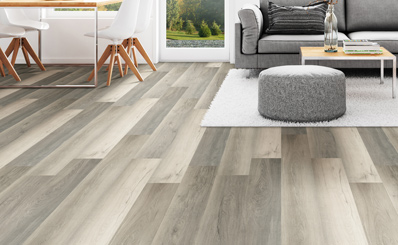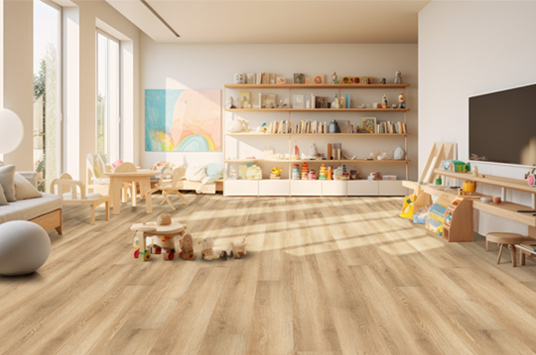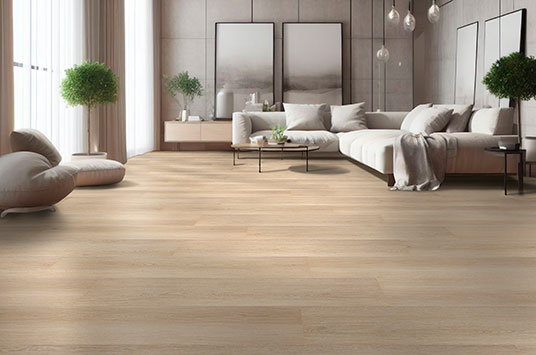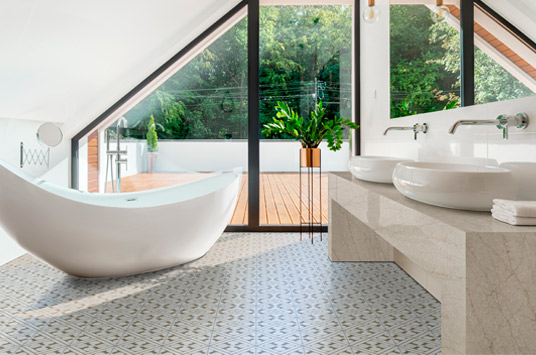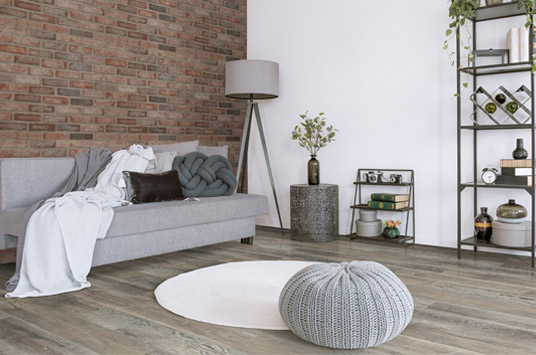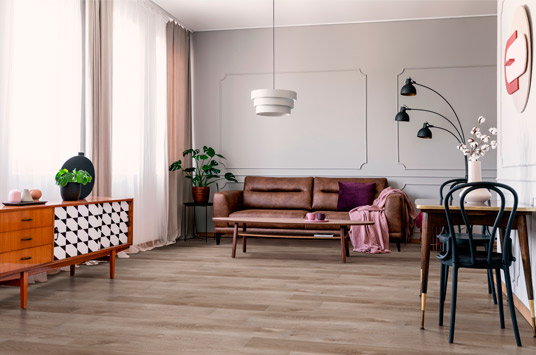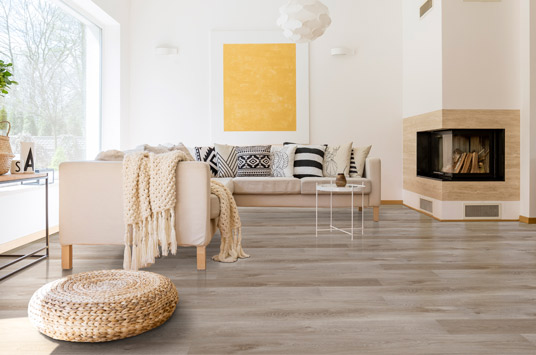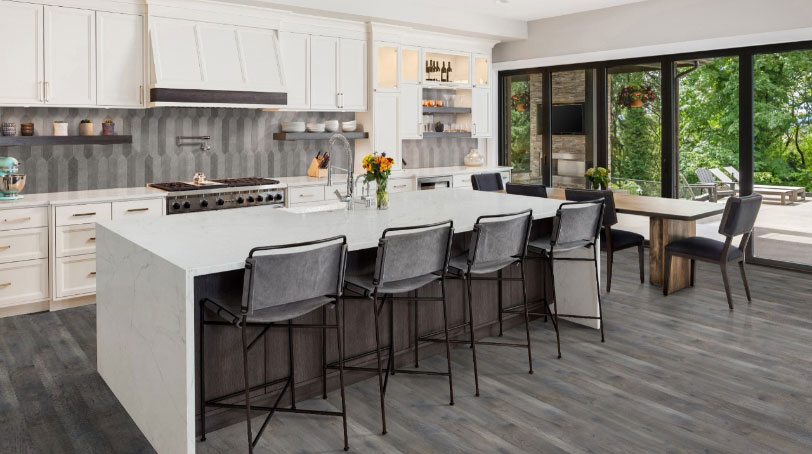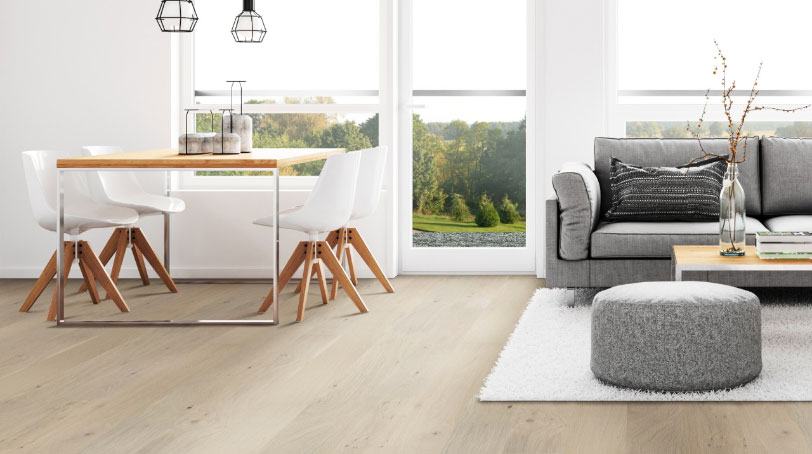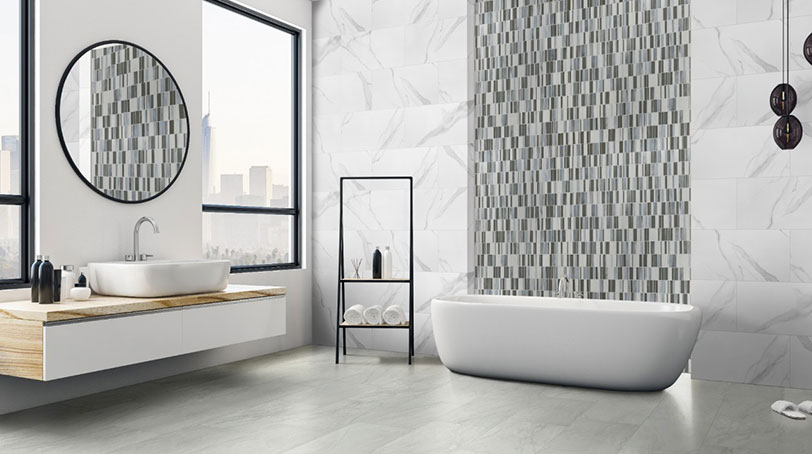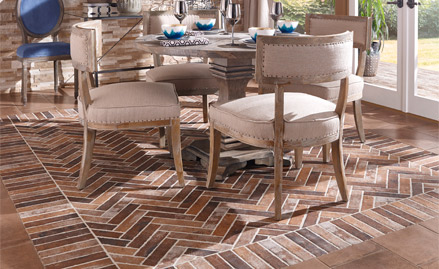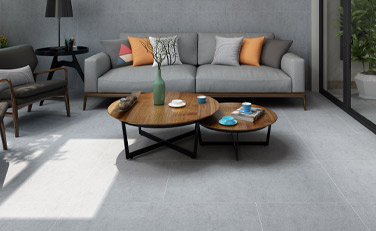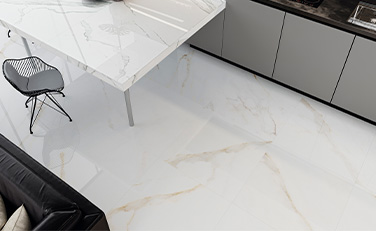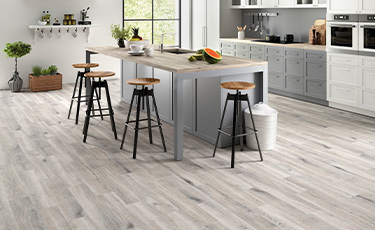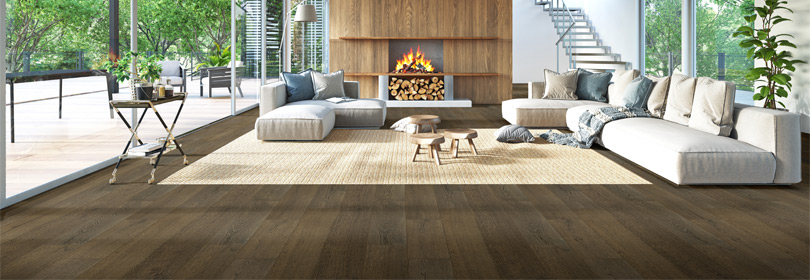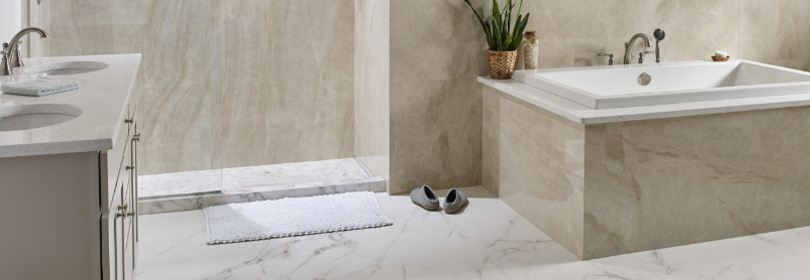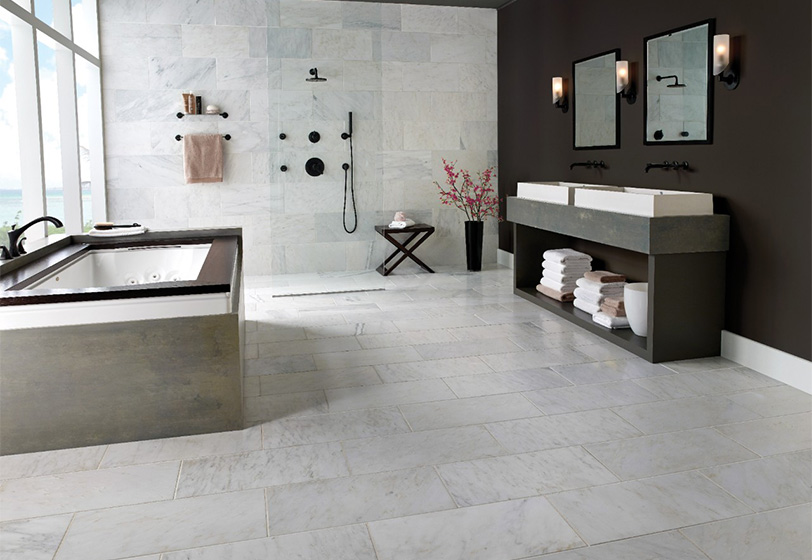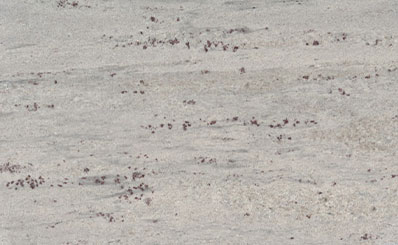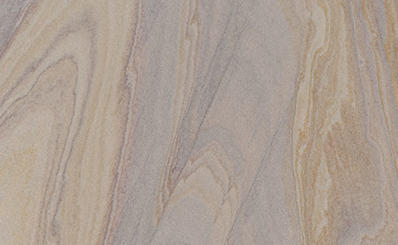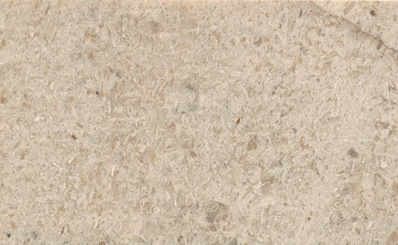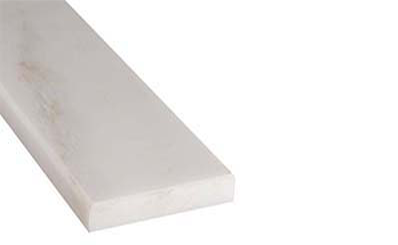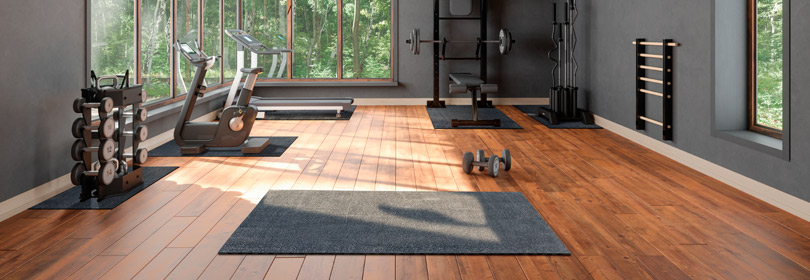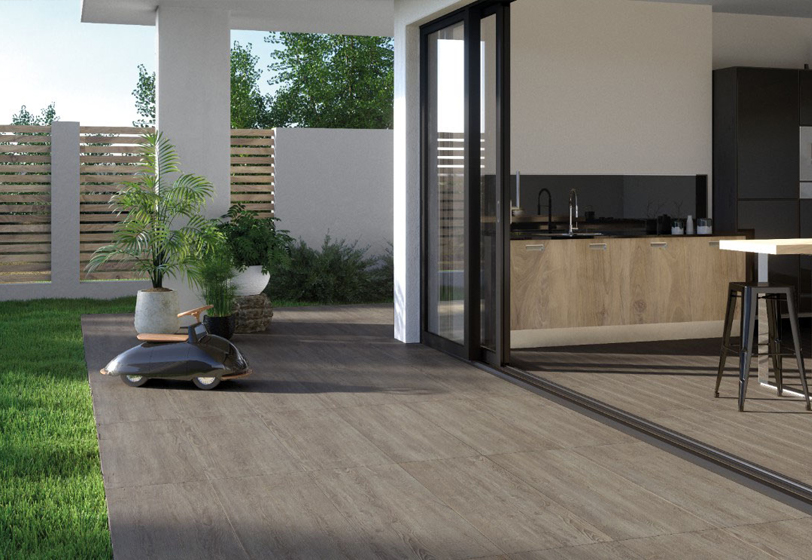LET US HELP
Our design trends, blogs, style guides, videos and more help you conceptualize your dream space and navigate the world of MSI surfaces. Let our resources help you discover your style and narrow down your favorites.
OUR LATESTBLOG
Need creative ideas and stunning imagery to inspire your next project? Explore our blogs.
PICK THE RIGHT FLOOR PATTERN FOR YOU
WHICH FLOOR TILE MATERIAL IS RIGHT FOR YOUR PROJECT?
Which Flooring Is Right for Your Project?
The type of flooring you choose for your floor depends on the desired style that you’re after and the location of the installation, such as in the kitchen, living room, or another area of the home.
Each flooring material has its own unique properties and characteristics, so it's important to consider which one will work best for your specific needs and design preferences. Here are details on the most common flooring materials.
Porcelain And Ceramic Tile
Porcelain and ceramic tiles are highly sought-after flooring options due to their durability and versatility, appealing to homeowners and interior designers alike. Available in both glazed and unglazed variants, these tiles also offer a spectrum of finishes, from high gloss to textured, accommodating a variety of aesthetic preferences.
Porcelain tile's ability to mimic diverse materials, such as wood or natural stone, has made it a favorite. The wood look tile, for instance, combines the warmth of wood with the resilience of porcelain. Similarly, ceramic tiles offer an array of styles, including the encaustic tile, known for its vibrant patterns and colors.
Whether you opt for porcelain or ceramic, both materials come in a vast assortment of colors, ensuring a perfect match for every design scheme.
Luxury Vinyl Flooring
Luxury Vinyl Flooring is offered in two types: Rigid Core and Dryback. Rigid Core is a rigid plank with an easy-install locking system, providing a fast, hassle-free installation process. Dryback is a flexible plank type that requires gluing down during installation. Both types offer distinctive advantages, allowing you to choose the perfect fit for your flooring needs.
Rigid Core Rigid Core luxury vinyl flooring is an innovative solution that enhances both residential and commercial applications with its two distinct styles: wood-look planks and stone-look tiles. Its exceptional durability, coupled with its 100% waterproof quality, makes it particularly suitable for areas with substantial foot traffic. The flooring features an easy-to-use click-lock system, simplifying the installation process. Furthermore, its unique "no acclimation" technology allows for immediate placement post-purchase. This low-maintenance flooring solution presents a cost-effective alternative to traditional wood or stone, providing the aesthetics of natural materials without their associated upkeep costs.
DrybackDryback luxury vinyl flooring is a glue-down plank that features a protective layer called CrystaLux™ technology, which enhances its durability and longevity. This type of vinyl flooring is available in wood-look planks and is designed to withstand everyday wear and tear.
Hybrid Rigid Core
Hybrid Rigid Core flooring features a solid core construction that is extra thick, with a pre-attached comfort and acoustic pad. It also includes a patent-pending waterproof technology and a protective wear layer that ensures durability and longevity. This flooring product is resistant to everyday wear and tear, and it also has built-in microbial protection.
Waterproof Wood Flooring
Waterproof Wood Flooring has a genuine wood layer on top that is finished and scraped to resemble high-quality wood. It comes in a range of colors and has variable-length planks, allowing you to create a custom look. This flooring is 100% waterproof, making it a long-lasting and durable choice for any space.
Natural Stone Tile
Marble TileMarble tile is a high-end flooring choice made from natural stone that comes in various colors and patterns. Marble is an elegant floor tile choice that looks beautiful and adds a touch of sophistication to any space. However, marble requires maintenance and is a softer flooring material, making it prone to scratching.
Travertine TileTravertine tile is a type of natural stone flooring that has a unique, porous surface and a warm, earthy appearance. It is available in a range of colors, from light cream to rich, dark hues. Travertine is a durable and low-maintenance material that is resistant to stains and scratches, making it a popular choice for high-traffic areas.
Quartzite TileQuartzite tileis a durable, scratch and stain-resistant natural stone flooring option with a subtle texture and various colors. It's low-maintenance and suitable for both residential and commercial spaces, but more porous than some stones and may need sealing.
Slate TileMarble Tileare natural stone products used for flooring, roofs, and walls. They are made from shale and have a durable, resistant, and natural look in various colors. They are easy to maintain and have a long lifespan.
Granite TileGranite is a popular natural stone floor tile. It is a durable and long-lasting material that is resistant to scratches and stains.
Granite tilecome in a range of colors and patterns, making them a versatile and attractive choice for many home flooring projects.
Sandstone TileSandstone is a natural stone floor tile.
Sandstone tileare durable and resistant to wear, making them a popular choice for high-traffic areas. They come in a range of colors and patterns and are suitable for both traditional and modern home design projects.
Limestone TileLimestone tileis a natural stone that is durable and resistant to wear, making them a popular choice for high-traffic areas. They come in shades of white, grey, and beige and are suitable for both traditional and modern home design projects.
Onyx TileOnyx tileis a type of mineral that is known for its translucence and unique patterns. Onyx tiles are known for their durability and resistance to wear and tear, making them a popular choice for high-traffic areas such as kitchens, entryways, and hallways. Onyx tiles come in a range of colors, including shades of white, green, red, and brown.
Can You Put Tile on The Floor and The Wall?
The coefficient of friction (COF) of a tile can indicate its suitability for use on floors or walls. Tiles with a COF of 0.5 or 0.6 are generally recommended for floor use but can also be used on walls. COF ratings range from 0.3 to 0.6. There are a wide range of tiles available for use on floors, walls, and backsplashes, with options in various colors, patterns, and materials.
How to Choose the Right Floor Tile Colors?
Tile colors can be divided into three categories: neutrals, monochromatic, and colors. The color of the tiles should enhance the overall harmony of the space. Neutral tiles, such as white, beige, and gray, can serve as a backdrop and contribute to a sense of tranquility. They can be easily paired with other colors. Tiles in a single color, known as monochromatic tiles, can also create a cohesive look. Colored tiles can be used to add visual interest and can be used sparingly or as the main focus of the room. It's essential to consider the color scheme of the space, as well as the desired atmosphere and style, when selecting tiles.
Floor Tile Shapes and Patterns
There are many shapes and sizes of tiles available for floors and backsplashes, including traditional and modern options. Rectangle, square, and Arabesque are some of the more traditional shapes, while subway, geometric, and hexagon tiles are becoming increasingly popular in modern home design. Brick and mosaic tiles are also commonly used on floors and backsplashes.
What Does It Cost to Tile a Floor?
The cost of tiling a floor can vary widely depending on several factors, such as the type of tile being used, the size of the floor, and the complexity of the installation. Here are some rough estimates for the cost of tiling a floor:
- Ceramic or porcelain tiles: $3-$10 per square foot
- Luxury Vinyl Flooring:
- Hybrid Rigid Core flooring:
- Natural stone tiles: $5-$30 per square foot
- Waterproof Wood Flooring: $10-$30 per square foot
These prices do not include the cost of labor, which can range from $5-$20 per square foot depending on the complexity of the project and the location of the job. It's always a good idea to get estimates from multiple contractors to get an idea of the cost of the project.
How Do I Pick the Size of Floor Tile?
- The size of the room: larger tiles can help to make a small room feel bigger, while smaller tiles can help to make a large room feel more intimate.
- The layout of the room: If the room has a lot of angles or irregular shapes, smaller tiles can be easier to work with and may be less likely to have cut tiles on the edges.
- The desired look: larger tiles can create a more modern and streamlined look, while smaller tiles can create a more traditional or busy look.
- The type of traffic: larger tiles may be more durable and easier to clean in high-traffic areas, such as entryways and kitchens.
It's a good idea to consider all these factors and to also consider the overall style and design of the space when selecting the size of floor tiles.





